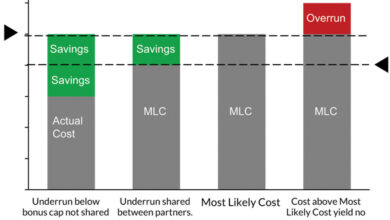Wirelines

Lease Sale 261 held after multiple delays, draws more than $382 million in high bids
The US Bureau of Ocean Energy Management (BOEM) held the Gulf of Mexico (GOM) Lease Sale 261 on 20 December. The sale generated $382,168,507 in high bids for 311 tracts covering 1.7 million acres in federal waters. A total of 26 companies participated in the lease sale, submitting 352 bids totaling $441,896,332.
Under a ruling from the US Court of Appeals for the Fifth Circuit, the BOEM included lease blocks previously excluded due to potential impacts to the Rice’s whale population from oil and gas activities in the GOM. Lease Sale 261 offered 13,482 unleased blocks on 72.7 million acres in the Gulf’s Western, Central and Eastern Planning Areas.
The sale had originally been scheduled for 27 September, then again for 8 November, in response to judicial orders.
In a statement issued on 20 December, API VP of Upstream Policy Holly Hopkins said, “Despite policy headwinds, this sale generated the highest bid amount in nearly a decade, demonstrating that our industry is working to meet growing demand and investing in the nation’s long-term energy security.”
She also added, “Although today’s congressionally mandated lease sale is a positive step after multiple delays, the lack of any offshore sales in the year ahead is a prime example of the administration’s failure to implement a long-term energy strategy. We urge the administration to reconsider its shortsighted approach and plan today for tomorrow’s energy demand.”
In December, the Biden administration issued its final five-year offshore leasing program. However, 2024 is expected to be the first year since 1966 without an offshore lease sale.
NSTA awards 27 licenses for North Sea E&P in latest round
North Sea UK production received a boost on 30 October with the award of 27 new licenses from the UK North Sea Transition Authority (NSTA) in areas that have the potential to go into production more quickly than others. Additionally, six more blocks, which were also ready to be offered, have been merged into five existing licenses.
The 33rd Oil and Gas Licensing Round was launched on 7 October 2022 with 931 blocks and part-blocks. In total, NSTA received 115 applications from 76 companies for 258 blocks/part-blocks when the application window closed on 12 January 2023. This was the highest participation since the 29th Round in 2016-2017.
All blocks that were awarded have been through the initial Habitat Regulation Assessment (HRA) and do not require further assessment.
There are currently 284 offshore fields in production in the UK North Sea and an estimated 5.25 billion BOE in total projected production to 2050. Oil and gas currently contribute approximately three-quarters of the UK’s domestic energy needs. Further, the UK oil and gas industry supports approximately 200,000 jobs and contributes £16 billion to the economy each year.
A recommendation for the remaining 203 blocks will be made once the HRA process has been completed.
BSEE issues energy infrastructure decom decision
In December, the US Bureau of Safety and Environmental Enforcement (BSEE) published a Record of Decision (ROD) for the decommissioning of offshore energy infrastructure on the Pacific Outer Continental Shelf (OCS). The decision provides a systemic pathway for the removal of obsolete offshore oil and gas infrastructure following site-specific environmental assessments and approved decommissioning plans.
The ROD will guide BSEE on all future decommissioning applications to remove oil and gas platforms, associated pipelines and other facilities offshore Southern California. It is the culmination of the Programmatic Environmental Impact Statement (PEIS) process for Oil and Gas Decommissioning Activities on the Pacific OCS. The final PEIS was published on 27 October 2023 and recommended the selection of the alternative of complete removal of all oil and gas equipment and facilities on the Pacific OCS. Twenty-three California oil and gas platforms, all installed between the late 1960s and 1990, are subject to eventual decommissioning.
The decision also documents that prior to decommissioning, a facility must undergo a National Environmental Policy Act review that will assess a variety of potential environmental impacts from infrastructure removal.
US EPA proposes rule to establish fee on methane emissions in oil and gas
On 12 January, the US Environmental Protection Agency (EPA) announced a proposed rule that would assess a charge on emitters of waste methane from the oil and gas sector that exceed emissions intensity levels set by the US Congress.
The Inflation Reduction Act established a Waste Emissions Charge for methane from certain oil and gas facilities that report emissions of more than 25,000 metric tons of CO2 equivalent per year to the Greenhouse Gas Reporting Program. As directed by Congress, the Waste Emissions Charge starts at $900 per metric ton of wasteful emissions in 2024, increasing to $1,200 for 2025 and $1,500 for 2026 and beyond. It only applies to emissions that exceed the statutorily specified levels.
The EPA’s proposed rule addresses details regarding how the charge will be implemented, including the calculation of the charge and how exemptions from the charge will be applied. Facilities in compliance with the recently finalized Clean Air Act standards for oil and gas operations would be exempt from the charge after certain criteria set by Congress are met.
Click here to read the EPA’s Fact Sheet on the Waste Emissions Charge.



